Text this colour links to Pages. Text this colour links to Family Trees. Place the mouse over images to see a larger image. Click on paintings to see the painter's Biography Page. Mouse over links for a preview. Move the mouse off the painting or link to close the popup.
Engravings of Sepulchral Brasses Volume 1 is in Engravings of Sepulchral Brasses.
Engravings of Sepulchral Brasses in Norfolk and Suffolk, tending to illustrate the Ecclesiasticat, Military, and Civil costume, to preserve memorials of ancient families in that county by John Sell Cotman (age 56), esq. Introductory essay by Dawson Turner, esq. FRS, FSA, &c. Second edition, with additional plates, and with notes by Sir Samuel Rush Mevrick, LLD, FSA, &c. Albert Way, esq. and Sir N. Harris Nicolas, KCMG. Volume 1. 1839.
Prats VIII.
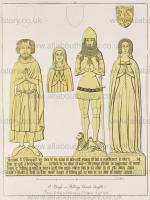
Sir Simon de Felbrigge And Lady, 1351. Sir Roger de Felbrigge And Lady, Felbrigge, Circa 1380.
Blomefield's Norf. viii. 108.
Sir Simon de Felbrigge, son of Sir Roger Bigod, was lord of Felbrigge in the ninth of Edward I. and twenty-second of Edward III. He married Alice, daughter of Sir George de Thorp, and died probably in 1351; for in 1852 we find Sir Roger his son lord, who, three years after, is said to have been in the wars of France. His wife was Elizabeth, daughter of Robert Lord Scales. He died, and was buried in Prussia (misread Paris by Blomefield), as the inscription testifies, in what year is very uncertain; but I have said about 1380, though the eleventh of Richard II. is the first year in which I find his son acting as lord. The dresses of the knight and his lady, almost the counterparts of those of Sir William and Cecilia Kerdeston, point to ten years later, when this stone may have been placed by Sir Simon as a memorial of two generations—his father and his grandfather.
[Though here called Sir Simon de Felbrigge, his effigy shows him to have been a Merchant, which agrees with the inscription, where no title is attributed to him. His son, Sir Roger Felbrigge, was a distinguished soldier, and died in Prussia. N.]
Note. Drawn by John Sell Cotman (age 32) in May 1815.
Simon Felbrigge: In 1360 he was born to Roger Felbrigge and Elizabeth Scales. In 1398 he was appointed 91st Knight of the Garter by King Richard II of England. On 3rd December 1442 he died.
Roger Felbrigge: Around 1335 he was born. In 1360 he and Elizabeth Scales were married. Around 1380 he died.
![]() Become a Member via our 'Buy Me a Coffee' page to read complete text.
Become a Member via our 'Buy Me a Coffee' page to read complete text.
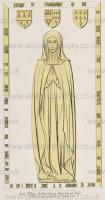
Plate IX. Philippa De Beauchamp (deceased), at Necton, 1384.
Blomefield's Norf. vi. 51. Gough's Sepulch. Monum, i. 147. Lies before the communion-table at Necton, where her monument represents her in the habit of a vowess or nun. Over her head are the arms of Beauchamp, Gules, a fess between six crosslets or, with a label of three points argent, impaling those of Lord Ferrers of Groby, Gules, seven mascles or.
This lady Philippa was the daughter of Henry Lord Ferrers of Groby, and married Sir Guy de Beauchamp, eldest son to Thomas, Earl of Warwick, who received the honor of Knighthood in the twenty-ninth of Edward III. and died at Vendosme in 1360. At his death his widow made a solemn vow of chastity, in the college church of Warwick, on the eleventh of August, before the then Bishop of Worcester.
[Sir Guy de Beauchamp made his will at Canterbury in September 1359, from which it appears that his two daughters took the veil at Shouldham, where it is probable that their mother was also secluded. N.]
Philippa Ferrers: Around 1337 she was born to Henry Ferrers 2nd Baron Ferrers of Groby and Isabel Verdun Baroness Ferrers Groby. She a great x 2 granddaughter of King Edward I of England. Before 1353 Guy Beauchamp and she were married. He the son of Thomas Beauchamp 11th Earl Warwick and Katherine Mortimer Countess Warwick. They were fourth cousins. He a great x 5 grandson of King John of England. She a great x 2 granddaughter of King Edward I of England. On 5th August 1384 Philippa Ferrers died.

Plate X. Sir John Harsyk And Lady, at Southacre [Map], 1384.
Blomefield's Norf. vi. 82. Gough's Sepulch. Monum. i. 146.
In the chapel of our Lady's Assumption, the burial place of the Harsyk family, lies the brass of which I have given an exact representation, but differing in some trifling respects from that given by Gough. On the surcoat of the knight are his arms: the same are repeated on a shield, surmounted by his helmet and crest of turkeys' feathers, placed across the top of the stone. This crest Sir John, his father, was allowed to wear by grant in the thirtieth of Edward III from Sir John Camoys, and bore it in a hoop Or. Sir John married Katharine, daughter and sole heir of Sir Bartholomew Calthorpe, knight, of Gestingthorpe; whose father, Sir Bartholomew, married Elizabeth, daughter and sole heir of Sir John de Gestingthorpe, of Essex, and, by reason of his inheritance, assumed the arms of Gestingthorpe, Ermine, a maunche gules; and these arms the lady has on her robe, on the dexter side, with her husband's on the sinister.
[Sir John Harsyk was evidently "the Sire de Harsike," who is said, in a Roll of Arms of the time of Edward the Third, to have borne "D'or au chief du sable endenté de quatre points." The inscription on this brass exhibits one of the rare instances of persons, who bore the same baptismal name as their ancestors, being designated as the "second" or "third" of their family. This Sir John Harsyk, who is there described as " tercius, " made his Will on the 14th November 1381, by which he ordered his body to be buried in the chapel of the Assumption of the Blessed Mary in the church of Southacre . He bequeathed 40 shillings to paint a tablet of the History of the Assumption, to be placed in the said chapel; and mentioned his wife Katharine, his son and heir John Harsyk, and two other sons . Harleian MS . No. 10. N. ]
See photographs [Map].
![]() Become a Member via our 'Buy Me a Coffee' page to read complete text.
Become a Member via our 'Buy Me a Coffee' page to read complete text.
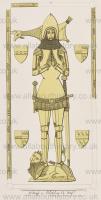
Plate XIII. Sir Nicholas Dagworth, at Blickling [Map], 1401.
Blomefield's Norf. vi. 384. Gough's Sepulch. Monum. ii. 5: At the east end of the south aisle of Blickling Church, is a brass figure, armed cap-a-pie; under his head lie his helmet and crest, a griffin's head erased. About him are four shields; at the first corner, Ermine, on a fess Gules 3 Bezants, Dagworth: at the fourth, Gules, a fess between six martlets or, Rosale; 2 and 3, the same arms impaled. Round the slab was this inscription:
"Here lies Nicholas of Dagworth, knight, formerly lord of Blickling, who died on the [?] day of the month of January, in the year of our Lord 1401. May God be merciful to his soul. Amen."
"Hic jacet Nicholaus de Dagworth, miles, quondam dominus de Blickling, qui obiit die mensis Januarii, anno domini Millessimo cccc. primo, cujus anime propicietur Deus. Amen."
"In 1364, Sir Nicholas Dagworth, Knt. afterwards Lord of Blickling, was commander in Acquitaine; in 1373 he was employed by King Edward III. in a secret negotiation with John Fastolff and others, in France. In 1376 he was sent by the King and council into Ireland, to examine into Sir William de Windsor's carriage there: but, at the motion of Dame Alice Perers, he was stopped, she declaring him Sir William's enemy, and that it was unjust to appoint one enemy to judge another; but the next year he was sent with full commission to reform the state of that kingdom. He was in as great esteem of King Richard II. as he had always been with Edward IIL., for in 1380 he, Sir John Haukewood, and Walter Skirlawe, doctor of the decrees, and dean of St. Martin's le Grand, London, were sent into France to treat with the dukes and lords of Italy; and the same year, being one of the privy chamber to the King, he, with Bernard Vansedles, Simon de Burley the chamberlain, Robert Braybrook, licentiate in the laws, and Walter Skirlawe, had like powers to treat with the German princes; the next year, he and Skirlawe went as ambassadors to Pope Urban VI., and had power to treat with the King of Naples.
In 1384, he, John Baam and Sir John Haukewood, went ambassadors to the Pope, and to treat with Charles, King of Jerusalem and Sicily: and, notwithstanding his being so much in favour, in the 11th of Richard IJ. he was one of those impeached in parliament, and was imprisoned in Rochester castle in Kent; but being honourably discharged, was next year appointed a commissioner to treat with the French King, and with the Earl of Flanders; .in the 13th of Richard II. he was made one of the commissioners to take the oath of the King of Scotland, to the treaty then concluded, and afterwards demanded satisfaction of the Scots for infringing that treaty, and also the money for redemption of Robert Bruce.
He retired to his house at Blickling in Norfolk, and died without issue in January 1401.
[He appears to have made his will in December 1396, wherein, however, he ordered his body to be buried in the church of St. Bennett, near Paul's wharf, London. To Eleanor, his wife, who was the daughter of Walter, and sister and co-heir of Sir John Rosale, of Shropshire, he bequeathed one third part of his goods "to be quiet." (Testamenta Vetusta.) She was only twenty-six years old at his decease (Esch. 5 Hen.IV), and afterwards married John Mortimer, and was living in the 10th Hen. IV. Dugdale says of Sir Nicholas Dagworth that "with thirteen horse he fought with sixty French near to Flaveny; and by the means of certain chariots, which he made use of for his defence, (being placed in a circle whereunto he could enter at pleasure,) utterly vanquished them." Baronage, ii. 148. N.]
[In this brass appears the first approach towards pauldrons, in the overlapping epaulieres, which are considerably extended in front. The plates under the genouillieres occur likewise here, covering the upper edge of the greaves. See Meyrick's Armour, ii.92. The cord which attaches the camail to the bascinet is also covered, a protection rendered necessary, as it was so often hewn down by the cut of the sword, and this is probably the earliest instance. S. R. M.]
Nicholas Dagworth of Blickling: he was born to Nicholas Dagworth. Around 1395 he and Eleanor Rossall were married. On 2nd January 1402 he died without issue. His widow Eleanor Rossall sold the Blickling, Norfolk estates and around 1409 married a second time John Mortimer.
![]() Become a Member via our 'Buy Me a Coffee' page to read complete text.
Become a Member via our 'Buy Me a Coffee' page to read complete text.

Plate XV. Sir Simon Felbrigge And His Lady Margaret, at Felbrigge, 1413.
Blomefield's Norf. viii.116. Gough's Sepulch. Monum. ii. 138, Anstis's Order of the Garter, ii. 167.
The monument now given is, after the Lynn brasses, the most interesting of the kind that our county can boast. It was placed by Sir Simon Felbrigge in his life time, and under his own direction, upon the death of Margaret his first wife, by whose side it was evidently his intention to be buried; though he afterwards changed his mind, and was buried in the church of the Friars Preachers, in Norwich (the present St. Andrew's Hall), in 1442. The knight, in complete plate armour, has his "shoulder pieces, or emerases, or gonfanons,"1 charged with a plain cross of St. George; round his left leg is the garter with the motto, the first example of it in Norfolk; his right arm supports a banner or pennon, charged with the arms borne by Richard II. in the latter part of his reign. In a shield above the canopy, on the knight's side, the same arms are repeated, as they are on the opposite side also, but impaling quarterly, 1 and 4, the arms of the Empire, a spread eagle with two heads crowned; 2 and 3, the kingdom of Bohemia, a lion rampant, quëue fourchée, being the arms of Anne, Richard's queen. The second and.third quarters are now blank in the plate, but are thus given by Anstis and Blomefield. Suspended from the middle pinnacle is Felbrigge, Or, a lion saliant gules,3 impaling a spread eagle, the arms of his lady: below, on each side, is a fetterlock, his badge, used by Edward IV. also, and the house of York. His supporters are not here, but are said to have been two lions, and his crest a plume of ostrich feathers ermine, issuing from a coronet. On the corbel, between the arches of the canopy, is a white hart lodged, which should have been gorged with a coronet and chain or; the device or badge, and also the supporter of Richard II.
Sir Simon was son of Roger de Felbrigge (vid. sup. 1380), and was a very distinguished knight in the reign of Richard II. To this king, in 1395, he was appointed standard-bearer (an office formerly granted to none but persons of tried courage and known military talents, and endowed with great personal strength), in memory of which the royal standard is represented on the monument. In the first year of Henry V. he received the robes of the Order of the Garter; and in the register of the Garter, 14, he is styled ordinis mawime senew. He died 1443. His first wife was Margaret, daughter of Primislaus, Duke of Teschen, and nephew to Winceslaus V. King of Bohemia, and consequently a near kinswoman of Anne, queen of Richard II. and one of her maids of honour. She died in 1413, and her figure is represented on the stone with his at Felbrigge. His second wife was Katharine, daughter of Ansketil Malory, Esq. of Winwick, and relict of Ralph Grene, of Draiton: she died in 1459, and was buried by her husband at Norwich.
[To the preceding account of this distinguished person it may be added that he furnished twelve men at arms and thirty-six foot archers, and possibly served in the expedition to France under Henry V. in 1415, and at Agincourt. He made his will at Felbrigge in September 1431, which was proved in February 1443-4, whereby he gave certain manors to his daughter Alana, wife of Sir Thomas Wanton, with remainder, failing the heirs of her body, to the right heirs of the body of Sir John Felbrigge, remainder to Richard Felbrigge, remainder to John, brother of the said Richard Felbrigge. He mentioned also his wife Katharine, whom he made one of his executors, and his daughter Anne a nun at Brusyard. ‘Katharine Lady Felbrigge, his widow, made her will in February 1459, and ordered her body to be buried with her husband. Testamenta Vetusta, and Harl. MS.10. N.]
Note 1. Palettes—S. R. M.
Note 2. This is one of the few existing memorials of the remarkable change in the royal Arms by the addition of the bearing attributed to Edward the Confessor, introduced by Richard II. which appears never to have been satisfactorily explained, and may deserve some more detailed notice. Froissart relates that he was informed hy a person attached to the court, that the king in his Irish expedition in 1394, with a view to conciliate that country, adopted the bearing of the Confessor: but according to Walsingham, this alteration in the arms commenced about 1398. By some the change has heen attributed to a pious motive, for the Confessor was Richard's Patron Saint, as were likewise the Baptist and King Edmund; and the heralds having assigned arms to Edmund, as well as the Confessor, we might expect, if this were the true explanation, to find both patrons similarly honoured. The MS. Chronicle of Melros imputes it to a different motive, namely, the pride and exultation of Richard, on having triumphed over his foes; as if the bearings of his ancestors were no longer good enough for him; but it were more reasonable to suppose, that he sought to honor the saint, by whose protection the triumph had been attained. These assumed bearings appear neither on the seals, nor the tomb of Richard: they were specially granted, as honorable augmentations of arms, to certain of his favourites or relations, with some armorial difference to each; but in all, as here in the royal arms, were borne impaling their paternal coats. They were granted, perhaps as early as 1396, to Thomas Mowbray, Duke of Norfolk; and afterwards to Thomas Holland, Duke of Surrey, and John Holland, Duke of Exeter, On the brass in Westminster Abbey, of Robert Waldeby, Archbishop of Dublin, who died 1397, and was in Ireland at the period of Richard's expedition,—being also, like Sir Simon Felbrigge, an attached and favoured servant of that king,—the royal arms are again found thus singularly impaled: in wardrobe accounts nearly of the same time, 22 Ric. II. occur entries of robes emdroidered with the arms of the Confessor, and of England, nunc partitis, which seems to imply that it was then a change of recent adoption. See Sandford, and Anstis, Reg. ii, 175, where will be found various memorials of Sir Simon Felbrigge. A.W.
Note 3. Hugh Bigod, Earl of Norfolk, who married Maud Marshal, bore on one side of his seal a representation of himself in complete armour, on horseback, and on the other side a lion saliant: the field was party per pale or and vert, and the lion gules: so that the Felbrigges, as descended from him, varied only (as was customary) the field, but retained the lion.
Note 4. Drawn by John Sell Cotman (age 33) in 1816.
![]() Become a Member via our 'Buy Me a Coffee' page to read complete text.
Become a Member via our 'Buy Me a Coffee' page to read complete text.
Pirate XXII.
All About History Books
The Chronicle of Walter of Guisborough, a canon regular of the Augustinian Guisborough Priory, Yorkshire, formerly known as The Chronicle of Walter of Hemingburgh, describes the period from 1066 to 1346. Before 1274 the Chronicle is based on other works. Thereafter, the Chronicle is original, and a remarkable source for the events of the time. This book provides a translation of the Chronicle from that date. The Latin source for our translation is the 1849 work edited by Hans Claude Hamilton. Hamilton, in his preface, says: "In the present work we behold perhaps one of the finest samples of our early chronicles, both as regards the value of the events recorded, and the correctness with which they are detailed; Nor will the pleasing style of composition be lightly passed over by those capable of seeing reflected from it the tokens of a vigorous and cultivated mind, and a favourable specimen of the learning and taste of the age in which it was framed." Available at Amazon in eBook and Paperback.

Sir Bryan and Lady Stapleton, at Ingham, 1438.
Blomefield's Norf, ix. 321. Gough's Sepulch. Monum. i. 119.
Sir Bryan, son of the late-mentioned Sir Miles and Ela Stapleton, was, according to Blomefield, born in 1378. In the registers of the Order of the Garter, given by Anstis, in his second volume, I find a Sir Bryan Stapleton, one of the knights of that order, from the seventh to the fourteenth of Richard II but what relation he bore to the knight of the same name, at Ingham, I do not know. The latter married Cecilia, daughter of Lord William Bardolf, whom he survived two years. In their effigies, which, till within twenty years, lay on the north side of the chancel, there is nothing remarkable, excepting that the knight is the first who has steel flaps to his cuirass instead of mail tasses,1 and his lady has the beginning of the mitre head-dress. The care too which has perpetuated the memory of the knight has perpetuated that of his dog also, whose name, Yai, is recorded on the monument. Above the canopy was Stapleton impaling Ufford; Lord Bardolf, Azure, three cinquefoils pierced or, impaling Barry of six, a bend over all, Lord Ponyngs, perhaps; and Stapleton impaling Bardolf.
The the inscription the date of his death, 1438, is lost.
Note 1. The tasses were never of mail, but sometimes what was termed a petticoat of mail was at a later period attached to the lowest tace. These are indeed the tuiles in their incipient state, and as there are four hinges, it seems probable that the artist forgot to put the dividing line between them.—S.R.M.
Note 2. Drawn by John Sell Cotman (age 33) in 1816.
Bryan Stapleton: Bryan Stapleton and Cecily Bardolf Baroness Marshal and Morley were married. Around 1379 he was born to Miles Stapleton at Ingham, Norfolk. On 7th August 1438 Bryan Stapleton died.
![]() Become a Member via our 'Buy Me a Coffee' page to read complete text.
Become a Member via our 'Buy Me a Coffee' page to read complete text.
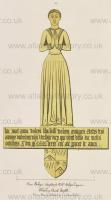
Plate XXXII. Ann Boleyn (deceased), at Blickling [Map], 1479.
Blomefield's Norf. vi. 388. Gough's Sepulch. Monum. ii. 184.
This brass is to the memory of Ann, infant daughter of Sir William Boleyn and his lady Margaret, daughter and coheir of Thomas Butler, Earl of Ormond, and aunt of the unfortunate queen who afterwards bore her name.
This brass gives us the first example of the necklace, which nevertheless had been for many years a conspicuous feature in female attire.
[The arms are Boleyn, Argent, a chevron gules, between three bulls' heads couped Sable, quarterly with Azure, three mullets, a chief dauncette or, Bracton, the heiress of Bracton having been wife of Geoffery, grandfather of Sir William Boleyn. The mullets, which were probably enamelled, do not appear. There was in the chancel at Blickling another brass of this family, representing Cecily, sister of Geoffrey Boleyn, lord of Blickling: she died 26 June, 1458, aged 50. The most interesting memorial of the family, which, from the connexion with Queen Elizabeth, possesses an additional interest, is the brass in Hever church, Kent, of Sir Thomas Boleyn, the eldest brother of Cecily, who was created Earl of Wiltshire by Henry VI. It is engraved in Thorpe's Custumale Roff. p. 115. Impressions of both are preserved in the British Museum.—A. W.]
Anna Boleyn: In 1476 she was born to William Boleyn and Margaret Butler.
![]() Become a Member via our 'Buy Me a Coffee' page to read complete text.
Become a Member via our 'Buy Me a Coffee' page to read complete text.
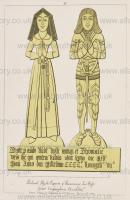
Plate XLIII. Henry Spelman (deceased) And Wife, at Narburgh, 1496.
Blomefield's Norf. vi. 161. Weever's Monuments, 820.
This is one of a family for a long time lords of Narburgh, many members of which were in public situations in the law. The present person was recorder of Norwich, and is here represented in his gown, which much resembled the gown formerly worn by the mayor, wanting only the buttons on the right shoulder. He married Hla, daughter of William de Narburgh, whose arms are impaled with his.
[His first wife was Christian, daughter and coheiress of Thomas Manning, Esq. The arms of Spelman were Sable, platée, between two flaunches argent. Manning, Azure and gules quarterly, over all a cross patonce between three trefoils slipped, or. Narburgh, Gules, a chief ermine. A. W.]
Henry Spelman: In 1430 he was born to John Spelman of Stow Bekerton. In 1465 Henry Spelman and Ela Narborough were married. She the coheiress of her father brought Narborough to the Spelman family.
Ela Narborough: she was born to William Narborough. In or before 1472 Thomas Shouldham of Marham and she were married.
![]() Become a Member via our 'Buy Me a Coffee' page to read complete text.
Become a Member via our 'Buy Me a Coffee' page to read complete text.
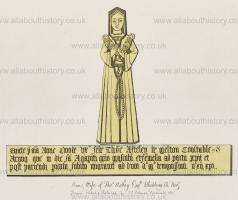
Plate LI. Ann, Wife Of Thomas Asteley (age 43), at Blickling, 1512. Blomefield's Norf. vi. 405. Gough's Sepulch. Monum. ii. 309,
This brass, to the memory of the second wife of Thomas Asteley, is mentioned by Gough, because of the twin infants in swaddling-clothes represented in her arms: the lady having died after the birth of these children. On this account it is singular, but remarkable on no other.
Anne Wood aka Wode: she was born to John Wood aka Wode. Before 1507 Thomas Astley of Hilmorton and Melton Constable and she were married.
Thomas Astley of Hilmorton and Melton Constable: In 1469 he was born. On 19th October 1543 he died.
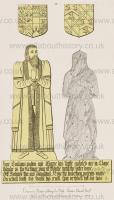
Plate LXVII. Erasmus Paston (deceased) And Wife, at Paston, 1538.
Blomefield's Norf. vi. 489.
The history of the family of Paston is given by Blomefield, in his account of the parish of Oxnead, their chief place of residence till the early part of the last centuryOf the person before us little is known: he was the son of Sir William Paston, and died before his father, leaving a widow, Mary, the daughter of Sir Thomas Wyndham, of Felbrigge, who survived him fifty-two years, and also a son, William, who succeeded his grandfather, and raised, during his own lifetime, the costly monument in North Walsham Church. Long beards came not into fashion before the time of Elizabeth, in whose reign I conclude this brass to have been placed.
Erasmus Paston: In 1506 he was born to William Paston and Bridget Heydon. In or before 1528 Erasmus Paston and Mary Wyndham of Felbrigg were married.
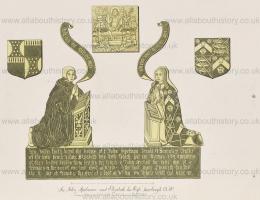
Prate LXIX. Sir John Spelman And Lady, at Narburgh [Map], 1545.
Blomefield's Norf. vi. 162.
Sir John Spelman was third son of Henry Spelman, whose monument has been given under 1496. He was second justice of the king's bench, and before that one of the most eminent barristers of his time. His wife was Elizabeth, daughter and coheir of Sir Henry Frowick, or Frouyk, of Gunnersbury, in Middlesex, who bore Azure, a chevron between three leopard's faces or, quartering Sturgeon, Azure, three sturgeons naiant in pale or, fretty gules. This is not only the first monument which represents the persons as kneeling at a prayer-desk, or prie-dieu, but is singular, in that the lines of the folds of his robe, and of the armorial bearings on hers, are not engraven, but relieved, as are the letters also of the inscription. It is our only example too of a judge in his robe and coif, and is executed in a style superior to most of its contemporaries. Above them is represented the resurrection of our Saviour, indicative of their hope, that in like manner they should be raised from the dead.
Elizabeth Frowick: John Coningsby of North Mimms and she were married. she was born to Henry Frowick of South Mimms and Anne Knollys. In 1498 John Spelman and she were married. They had thirteen sons and seven daughters.
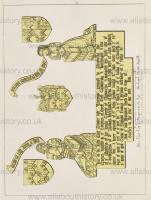
Plate LXXII. John Eyer, Esq. And Wife, at Narburgh [Map], 1561.
Blomefield's Norf. vi, 159.
Another civilian in armour, and another mural monument, in its general features much resembling the last. On the desk, covered with a cloth, having a gold fringe, lie his gauntlets beside his prayer-book. Between them is Eyer quartering Townsend, and behind her the same shield impales Blenerhasset and his quarterings, described in p. 35. This John Eyer was a great purchaser of religious houses that were dissolved by Henry VIII. and bought of that king four monasteries at Lynn. He was possessed also of Bury Abbey, and died without issue.
John Eyre: After 27th December 1545 he and Margaret Blennerhasset were married. Her second husband.
Margaret Blennerhasset: she was born to Thomas Blennerhassett of Frens. Before 27th December 1545 John Spelman of and she were married.
All About History Books
The Chronicle of Abbot Ralph of Coggeshall describes the reigns of Kings Henry II, Richard I, John and Henry III, providing a wealth of information about their lives and the events of the time. Ralph's work is detailed, comprehensive and objective. We have augmented Ralph's text with extracts from other contemporary chroniclers to enrich the reader's experience. Available at Amazon in eBook and Paperback.
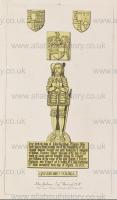
Plate LXXXI. John Spelman, Esq. at Narburgh, 1581.
Blomefield's Norf. vi. 161.
Another excellent specimen of costume, representing the second son of Sir John Spelman, given under the date 1545. At the right corner, Spelman and Narburgh quarterly, impale Heigham quartering Francis, a chevron engrailed ermine between three doves rising or; and in the opposite shield, the same impale Saunders, a chevron ermine between three bull's heads caboshed argent.